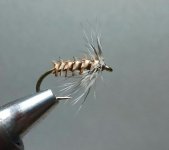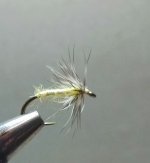kobalt335
Member
- Joined
- Jul 26, 2014
- Messages
- 332
I got hooked on swinging wets last year and so now I started tying more and more. I'm just curious about what is everyone's favorite or best producing wet? For me last year, it was just a simple size 16 or 18 hares ear soft hackle. It was tough to compare it to a yellow thread body with partridge though around sulfur time!






